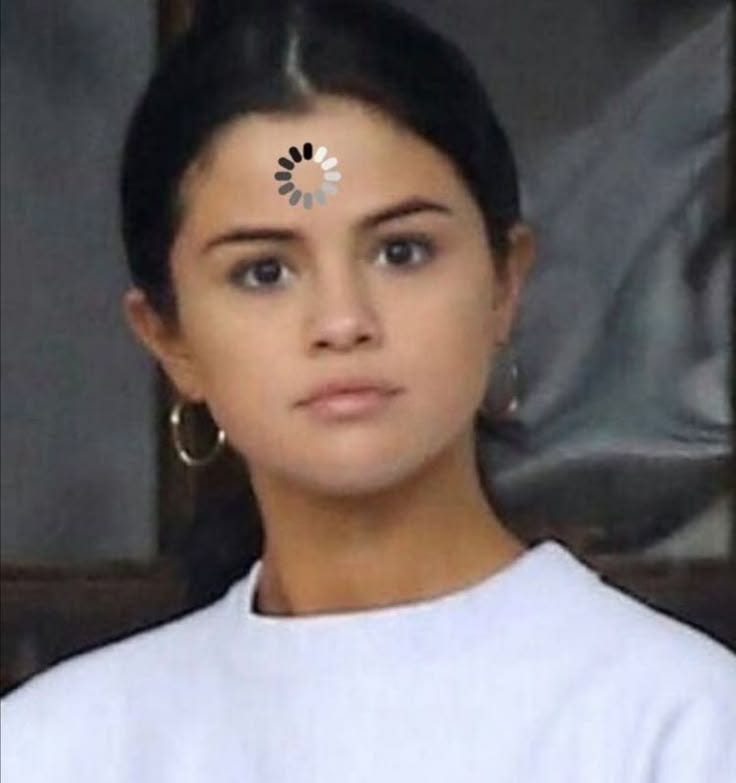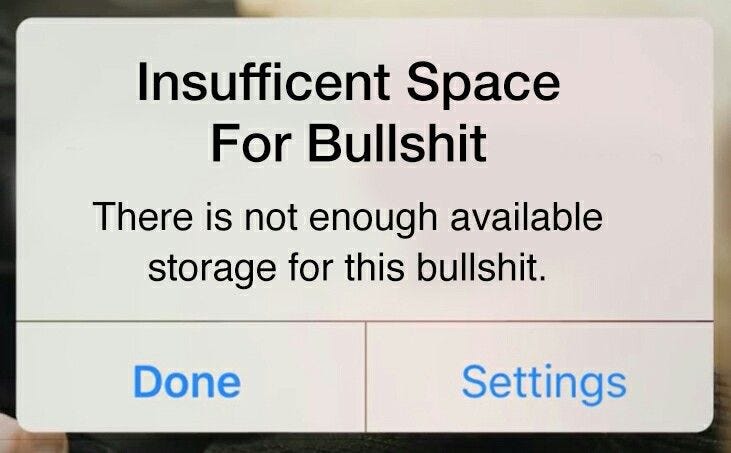We’re on week 9 of our 12-week journey through The Bare Minimum Artist’s Way — our ADHD-friendly version of The Artist’s Way by Julia Cameron.
If you’re just landing here for the first time — welcome! We’re suspending the dogma rules about morning pages and artist dates and doing the bare minimum with The Artist’s Way, because we believe half-assing it is better than giving up on Week 3 .
Sound like you? Join us here on Substack and listen to our weekly companion episodes every Wednesday on Spotify and Apple Podcasts.
The silent saboteur
If you are an artist who hasn’t made a single thing in weeks but still feels exhausted from the sheer thought of making something… congratulations! You’ve been unknowingly siphoning off all your electric creative life force to self-doubt and fear!
When we’re creatively blocked, it’s not because we’re lazy or untalented. It’s because we let our creative ideas morph into something massive, terrifying, and impossible.
We think, I should start painting again, but also, I need to find my signature style, so I can lock in a solo-show by the end of the year.
We can’t just “start a YouTube channel.” Oooh, no— we think, I should start a YouTube channel, but first, I need the pin down the perfect niche, a cinematic aesthetic, a fully optimized content strategy so I can get into the partner program and start getting sponsors for $1500 a video
And so, obviously, we do nothing.
If this sounds like the internal experience of ADHD, that’s because it is. We love nothing more than turning simple ideas into overwhelming life crises and then wondering why we’re paralyzed.
And at the root of all of this chaos (ADHD or not!) is dysregulation. Overwhelm. Fear of failure, fear of success, fear that if we actually make something, our entire identity as a struggling artist will collapse and we’ll have to—gasp—figure out who we are without so much struggle.
Sometimes we fear rejection if we become wildly successful (because obviously, our entire friend group will instantly hate us and plot our downfall).
Other times, we secretly dread losing the attention and comfort that come with struggling. It’s weird, but think about it — if you’re doing well, no one checks in. No one offers sympathy, no one is worried about you and a lot of times, we mistake this form of attention as the same thing as love.
To make matters worse, we often believe that if we’re going to break away from “normal life” to be an artist, we’d better be great. If we’re not winning a Booker Prize, landing an Emmy, or making millions, why even bother? This black-and-white thinking keeps us stuck in the worst possible spot: doing nothing and feeling badly about it.
And the only cure for all this fear is not a new Perfect System™ that will make you consistent — it’s love and compassion for yourself, for your work, and for the messy, ridiculous process of making things.
Enthusiasm over discipline
If you have ever spent hours researching “how to have more discipline” instead of actually doing the creative thing you claim to love, welcome to the club.
Many of us think discipline is the answer because all the Serious Productivity People say so. We tell ourselves, If I could just get my life together and stick to a routine, I’d be unstoppable! And then we try, realize it’s boring, and spiral into existential despair.
The truth is, discipline is useful, but it has a short battery life. Enthusiasm is what actually keeps us going.
Julia Cameron reminds us that the word enthusiasm comes from the Greek for “filled with God.” Now, you don’t have to take that literally, but it’s a nice way of saying that creativity is supposed to feel good. Playful. Fun. Like an adventure, not a punishment.
Joy sustains creativity. Discipline is the backup plan.
This is also why some of the hyper-optimized productivity advice out there feels so hollow after a while. The Atomic Habits-ification of creative life has convinced us that we must track everything, optimize every second, and eliminate all inefficiencies. But where’s the fun in that? Where’s the play? If the systems we build suck all the joy out of creativity, we’re doing it wrong.
So, instead of scheduling “serious work sessions,” try making meetings with yourself that feel like goofing off. Instead of optimizing for efficiency, optimize for delight. Enthusiasm first, systems second.
Creative U-Turns: The Addiction to Struggle
Somewhere along the way, we decided that suffering = art. Julia Cameron reminds us that often the most prolific artists are happy people, but when we’re used to getting attention and validation from struggling, success can feel…threatening.
When we feel threatened by the possibility of moving beyond our struggle, she says that we do a creative u-turn, we self sabotage.
She suggests that many of us unconsciously create unnecessary struggles for ourselves because we’re lowkey addicted to the sympathy and attention that come with suffering. Yikes.
Here’s how this plays out:
We procrastinate endlessly, convincing ourselves we “work better under pressure.”
We get 90% through a project, then abandon it because finishing would mean having to promote and maybe be successful with what we made.
We latch onto new ideas before completing old ones, ensuring we’re always in the exciting “beginning” stage.
We get stuck in perfectionism because we think if we can make it perfect, then no one will criticize or have any issues with what we made.
Cameron compares the blocked artist to a young, skittish horse—one that needs reassurance, structure, and a lot of patience. You can’t force yourself into productivity through sheer willpower. You have to coax yourself into it. You have to make it feel safe and fun.
Confronting your resentments
To really get unstuck, Cameron says we need to clear out two things: resentment (aka, anger at unmet expectations) and resistance (aka, fear). Until we do, we’ll keep running in circles.
Part of this means confronting the buried payoffs we get from not working. When we stay stuck, we avoid failure. We avoid success. We avoid change. Our inner artist—the little kid inside us who just wants to make stuff—is prone to tantrums and irrational fears.
Cameron’s solution is to dig it all up. Make a list of what you’re afraid of. Make a list of every excuse you tell yourself. Make a list of all the ways you’ve benefitted from not pursuing your creative work. This exercise is brutal, but it works. If you do it right, it will deliver a fatal blow to your creative block.
And if that sounds scary, just remember: you don’t have to be perfect. You don’t have to be great. You just have to start.









